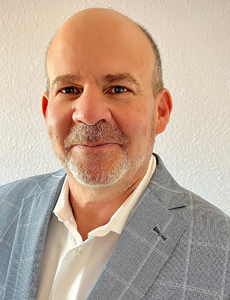Navigating Innovation: The Intricacies of Insuring Emerging Exposures

Between emerging risks and written coverage is a lot of science and more than a little art. There are always new exposures that owners would like to insure. Most carriers say development is just as much a push from their underwriting and claims groups as a pull from brokers and insureds.
Innovation is more than just a what; it’s a how.
“New and improved” gets a bad rap, but incremental enhancements to existing policies are often the fastest and easiest ways to respond to evolving risks. And fast is important. “Speed to market” was a familiar phrase among development executives. Unspoken, but implied, was the importance of not letting great be the enemy of good.
Creating Coverage
The foundational pillars of developing new coverage, according to Michael Marks, VP of emerging markets and innovation at Nationwide, “are understanding the risks themselves, the partners and collaborators, and then the specific policy language itself. The risks and the coverage might seem obvious, but the collaboration is just as important.
“It is essential that their strategic objectives are aligned with ours,” he said.
It might seem axiomatic, but “we are trying to find what is insurable,” said Marks. “For example, we are very interested in parametric, especially for single perils. That can simplify the offering both for us and for the insured. They can buy just the protection that they need. We are always trying to break things apart and make them more accessible.”
An example of making things insurable would be a parametric trigger to protect against the effects of a hurricane in the Pacific disrupts that supply chain for a business that requires shipments of steel from an Asian port.
“We look for opportunities to enhance offerings for areas not previously covered,” said Marks. “In that case we could add a business-interruption insurance with a parametric trigger.” Another approach can be to carve out coverage for specific exposures for perils such as hurricanes or wildfire, he added.
“We work in both admitted and non-admitted,” said Marks, “we also conduct some consumer testing. All of it informs our development. Our brokers tell us what is and is not selling, and why. Our claims people tell us how we could revise our coverage.”
De-novo innovation starts with data analysis, Marks explained. “At the beginning we work with our partners to get new offerings into the market. About six months after the introduction we review the uptake rate and loss ratios.”
The refresh rate on data is “critical,” Marks stressed.
“We’ve found that a lot of data just sits until something big happens. So it’s important to refresh data often, especially in climate-related coverage when we look at CAT-prone regions. You could be looking at acres of concrete,” where there was recently woods or fields, he elaborated.
A notorious example of that was when Hurricane Harvey devastated the Gulf Coast, especially Houston, in 2017. Areas that had not previously suffered serious flooding were inundated because a new housing development, shopping area or office park just a few miles away changed the local drainage pattern.
Most of the specific developments in Marks’s group are under non-disclosure agreements with partners, but he did give an example of the kind of things they have cooking. “Artificial intelligence is being used in many areas for processing and analysis. That creates new risks that we need to get ahead of. The question becomes how to cover AI. Possibly through errors and omissions insurance.”
From a binding perspective, much of the focus in 2023 was around refinement of our existing appetite as opposed to coverage expansion, Marks explained.
“However, there were a few segments of the portfolio, namely product manufacturing and contractors, in which we broadened appetite and introduced additional ancillary coverages to help round out our offerings and attract greater market share.”
That included revamping the product-manufacturing program to expand the risk profile into several additional classes; introducing a remodeling program tailored to meet the needs of residential and commercial contractors performing non-structural, non-ground up work; and a miscellaneous-tools inland-marine bundle offering on the contractor classes, added via endorsement.
“These were developed by assessing competitor offerings and market demand in correlation to our business strategy as it relates to our focus classes,” said Marks. “Because our binding portfolio is non-admitted and not subject to filing, pricing was judgment-based and took into consideration scalability and market salability. Initial response from agency partners has been favorable; since launching our new remodeling program and product-manufacturing programs, we have more than doubled our written premium and polices-in-force counts.”
Innovation Drivers
Innovation comes from different areas, said Hela Trerotola, senior vice president in executive assurance growth and middle markets at Arch Insurance. “In management liability, it mostly comes from customer requests. We also identify areas of opportunity,” which can include areas of disruption – for example perils that have been excluded or losses that are not covered.
A big part of developing new types of coverage is taking feedback, positive and negative from brokers and clients, added Jamie Schibuk, executive vice president and head of cyber and PL open brokerage at Arch.
“We also try to work from claims to address gaps. We also make extensive use of technology. For example, in cyber coverage we use third-party data for identifying vulnerabilities. That helps us in underwriting and pricing, as well as in supporting risk management for insureds to help them enhance their cybersecurity.”
Sometimes innovation is what happens organically.
“Across the industry there are a lot of out-of-date forms,” said Trerotola. “Last year we started an initiative to update our forms. In some cases those updates incorporate 10 or 15 years of advancements consolidated into the base form. That simplifies and streamlines the process, and several of the enhancements are of material benefit to insureds. Brokers definitely had a lot of input.”
Schibuk noted that Arch also has customizable forms for brokers to adapt on their own. That collaboration with brokers “helps us to reposition our risk engineering, and also helps us in our approach to underwriting.”
Innovation in underwriting “is a meeting of the minds,” he stressed. “Everyone has their perspective — actuaries, claims people, risk managers, sales, brokers. It really does take a village to understand the opportunities and the possible downsides.”
Bringing Forth a Good Product
That all said, speed to market is essential, said Trerotola.
“It is important to have the right minds in the room, and we have to move the process along. We implemented a plan across the company in 2019 to help us push innovation through the organization and out to the market.”
In some lines the perils themselves drive innovation. The most obvious is climate change that is radically altering natural catastrophe exposures. Another is cyber, said Schibuk, explaining that cyber coverage today is very different from coverage several years ago.
“When cyber coverage started to be offered, it was mostly about data breaches and privacy,” said Schibuk. But business that did not have customers’ personal information or credit-card numbers did not feel they were at risk. Now cyber coverage is about operations, business interruption, even ransomware. That has vastly expanded the type of coverage and the client base.”
The lesson, Schibuk concluded, “is that new coverage comes from meaningful underwriting. Offerings have to be relevant to the landscape. You can’t just put exclusions on things.” &











